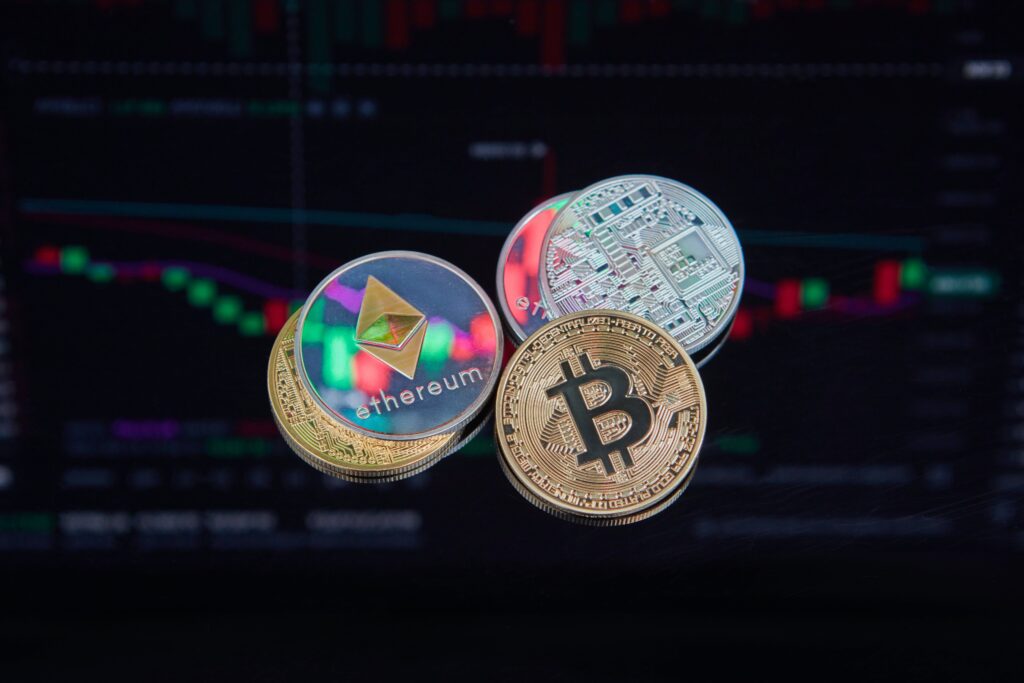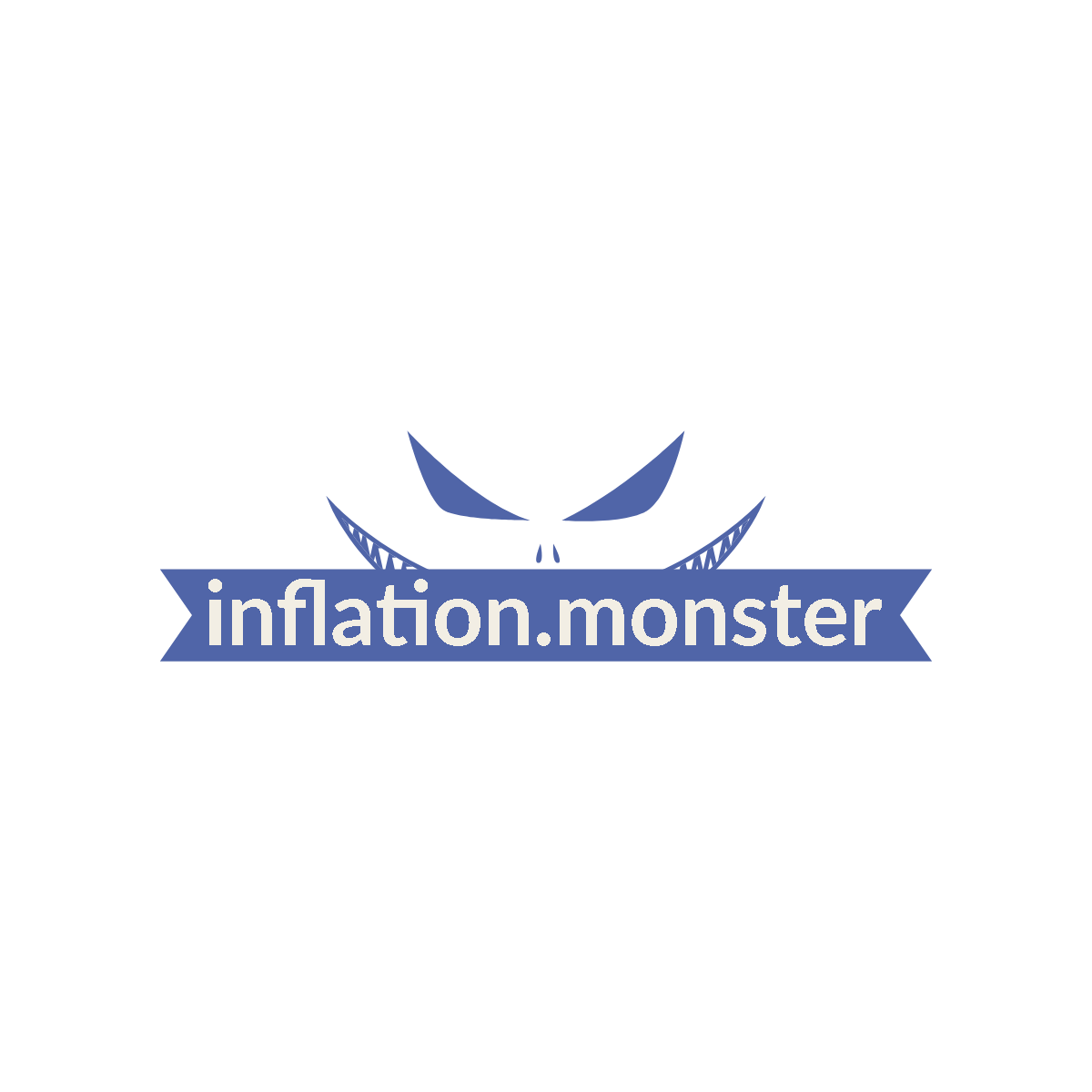Imagine a world where money is just paper and numbers on a screen, with no intrinsic value. That’s the reality of fiat currencies, and it’s a concept that has shaped the course of history. Inflation and the History of Fiat Currencies takes you on a journey through time, unraveling the mysteries behind this phenomenon and its impact on our economies. Here at Inflation.Monster, we delve deep into the complex realm of inflation, equipping you with knowledge to navigate the financial landscape. Get ready to explore the fascinating relationship between hard money, inflation, and the monster that is inflation.
Defining Inflation
Introduction to inflation
Inflation is a term commonly used to describe the general increase in prices of goods and services over time. It is often measured by the Consumer Price Index (CPI), which calculates the average change in prices of a basket of goods and services that consumers typically purchase. Inflation is considered to be a natural part of the economic cycle and is influenced by various factors such as government policies, supply and demand dynamics, and the overall state of the economy.
Causes of inflation
There are several causes of inflation, including demand-pull inflation and cost-push inflation. Demand-pull inflation occurs when there is an increase in aggregate demand for goods and services, usually due to an increase in consumer spending or government expenditure. This increase in demand leads to an increase in prices as businesses try to meet the growing demand in the market.
On the other hand, cost-push inflation occurs when there is an increase in production costs, such as wages or raw material prices. When businesses face higher costs, they pass on these increased expenses to the consumers by raising the prices of their products. External factors such as energy prices or import costs can also contribute to cost-push inflation.
Effects of inflation
Inflation can have both positive and negative effects on an economy. In moderate amounts, inflation can stimulate economic growth by encouraging consumer spending and investment. However, when inflation becomes too high or unpredictable, it can have detrimental consequences.
One negative effect of inflation is a decrease in purchasing power. As prices rise, the value of money decreases, meaning that individuals can buy less with the same amount of money. This decrease in purchasing power erodes the real value of savings and income, impacting individuals’ financial well-being.
Inflation can also create uncertainty and make it difficult for businesses to plan for the future. When inflation is high and unpredictable, businesses may face difficulties in setting prices, making long-term investments, and managing costs. This uncertainty can lead to decreased economic activity and slower economic growth.
Types of inflation
Inflation can be classified into different types based on their causes and effects. Some common types of inflation include:
- Demand-pull inflation: When there is excessive demand for goods and services, which leads to an increase in prices.
- Cost-push inflation: When the increase in production costs is passed on to consumers through higher prices.
- Hyperinflation: A rapid and uncontrollable increase in prices, often caused by extreme monetary policies or political instability.
- Imported inflation: When inflation in one country is caused by an increase in the prices of imported goods and services.
- Built-in inflation: When inflation expectations are incorporated into wage and price-setting decisions, leading to a self-perpetuating cycle of rising prices.
Understanding these different types of inflation is essential for policymakers and central banks to implement appropriate measures to manage and control inflation effectively.
Understanding Fiat Currency
Definition of fiat currency
Fiat currency is a type of currency that is not backed by a physical commodity, such as gold or silver, but derives its value from the trust and confidence of the people who use it. The value of fiat currency is determined by the government, which has the power to regulate its supply and set its value in relation to other currencies.
Unlike commodity-backed currencies, such as the gold standard, fiat currencies have no intrinsic value. Their value is solely based on the belief that they can be exchanged for goods and services.
Historical background of fiat currency
The use of fiat currency dates back to ancient civilizations, where rulers would issue coins made of base metals and assign them a certain value. These coins were not backed by any physical commodity but were accepted as a medium of exchange due to the authority of the issuing ruler.
In more recent history, the widespread adoption of fiat currency can be traced back to the breakdown of the gold standard during World War I. Countries resorted to printing more money to finance their war efforts, leading to the abandonment of gold-backed currencies and the rise of fiat currencies as the primary form of money.
Advantages and disadvantages of fiat currency
Fiat currency offers several advantages over commodity-backed currencies. One of the main advantages is flexibility. Since fiat currency is not tied to any physical commodity, its supply can be easily adjusted to meet the changing needs of the economy. Governments can increase or decrease the money supply as necessary to stimulate economic growth or control inflation.
Another advantage is the ease of transaction. Fiat currencies are widely accepted and used for everyday transactions, making them convenient for both individuals and businesses. The absence of the need to carry physical commodities like gold or silver also eliminates the risk of theft or loss.
However, fiat currencies also have their disadvantages. One significant disadvantage is the risk of inflation. Since the value of fiat currency is not tied to any physical commodity, its supply can be increased rapidly, leading to a decrease in its value and a rise in prices. This inflationary risk can erode the purchasing power of individuals and negatively impact the economy.
Comparison with commodity-backed currencies
Commodity-backed currencies, such as the gold standard, have inherent value because they can be exchanged for a specified amount of a physical commodity, such as gold or silver. This backing provides stability and limits the ability of governments to manipulate the value of the currency.
In contrast, fiat currencies have no intrinsic value and rely solely on trust and confidence. The value of fiat currencies can fluctuate greatly, depending on various economic and political factors.
While commodity-backed currencies provide stability, they can also be subjected to limitations. The availability of the underlying commodity and its price fluctuations can limit the flexibility of the currency. Additionally, the cost of storing and securing physical commodities can be significant.
The choice between fiat currency and commodity-backed currency is a complex one and depends on various factors, including the economic system, government policies, and the overall stability of the financial system.

The Relationship Between Inflation and Fiat Currencies
How fiat currencies can contribute to inflation
Fiat currencies can contribute to inflation due to their inherent qualities. As mentioned earlier, fiat currencies are not backed by any physical commodity, and their value is determined by the trust and confidence of the people who use them. This means that the supply of fiat currencies can be increased significantly by the government, leading to an increase in the overall money supply.
When the money supply increases faster than the growth of the economy, it can lead to an increase in prices, resulting in inflation. The government can increase the money supply through various means, such as the printing of more banknotes or the creation of digital money.
Role of central banks in controlling inflation
Central banks play a crucial role in controlling inflation in fiat currencies. Central banks have the authority to implement monetary policy measures to manage the money supply and maintain price stability. When inflation is low or within an acceptable range, central banks can stimulate economic activity by increasing the money supply. Conversely, if inflation is high or rising, central banks can implement measures to tighten monetary policy and reduce the money supply.
Monetary policy tools commonly used by central banks include open market operations, reserve requirements, and interest rate adjustments. Open market operations involve the buying or selling of government bonds to influence the money supply. Reserve requirements refer to the amount of reserves that banks are required to hold, which can affect their ability to lend and the overall money supply. Interest rate adjustments are used to influence borrowing costs and consumer spending.
Historical instances of high inflation in fiat currencies
Throughout history, there have been several instances of high inflation in fiat currencies. One notable example is the hyperinflation that occurred in Weimar Germany in the early 1920s. In an attempt to pay war reparations, the German government printed an excessive amount of money, leading to a rapid and uncontrollable increase in prices. Prices would often double within a matter of hours, and people would carry wheelbarrows full of banknotes just to buy basic necessities.
Another well-known case is the hyperinflation crisis in Zimbabwe in the late 2000s. Political instability and reckless monetary policies caused hyperinflation to soar to astronomical levels, leading to the issuance of banknotes with denominations in the billions and trillions. Prices would change multiple times a day, and the Zimbabwean dollar became virtually worthless.
These historical instances highlight the devastating effects of unchecked inflation and the importance of responsible monetary policies in maintaining price stability.
Implications of inflation on the value of fiat currencies
Inflation can have significant implications for the value of fiat currencies. As inflation rises, the value of fiat currency decreases, eroding the purchasing power of individuals and businesses. This decrease in value can have a detrimental impact on the overall economy.
Inflation erodes the real value of savings and investments. If the rate of inflation exceeds the rate of return on investments, individuals and investors can experience a loss of wealth. This can discourage savings and long-term investments, leading to slower economic growth.
In addition, inflation can also impact international trade. If the inflation rate in one country is significantly higher than in another, the currency of the high inflation country may depreciate in value relative to other currencies. This can make exports more expensive and imports cheaper, potentially leading to imbalances in trade and affecting the competitiveness of industries.
Overall, inflation can disrupt economic stability, reduce the confidence of individuals and businesses, and have long-lasting effects on the value of fiat currencies.
Early Examples of Fiat Currencies
Origins of fiat currencies
The origins of fiat currencies can be traced back to ancient civilizations, where rulers and governments began issuing coins made of base metals and assigning them a certain value. These coins were not backed by any physical commodity but were accepted as a medium of exchange based on the trust and authority of the issuing ruler.
Early forms of fiat currencies were often used as a means of facilitating trade and commerce, making transactions more convenient and efficient. These early fiat currencies laid the foundation for the development of modern monetary systems.
The Chinese experience with fiat currencies
China has a rich history of using fiat currencies, with some of the earliest examples dating back to the Tang Dynasty in the 7th century. During this time, the Chinese government issued paper money known as “jiaozi” to facilitate trade and reduce the need for carrying heavy coins.
The use of paper money expanded during the Song Dynasty, with the introduction of “guanzi” and “huizi” as official government-issued currency. These early forms of fiat currency were widely accepted and helped to revolutionize commerce and trade in China.
Fiat currencies in ancient civilizations
Fiat currencies were not limited to ancient China. Various ancient civilizations, such as Rome, India, and Persia, also used fiat currencies as a medium of exchange. These early forms of fiat currencies were often made of base metals and derived their value from the authority of the governing bodies.
The use of fiat currencies in ancient civilizations played a crucial role in promoting economic activity, encouraging trade, and simplifying transactions. However, these currencies were vulnerable to inflation and debasement, as rulers had the power to manipulate their value and increase the money supply.
Lessons learned from early examples
The early examples of fiat currencies teach us valuable lessons about the implementation and management of monetary systems. One key lesson is the importance of maintaining credibility and trust in the currency. Fiat currencies rely heavily on the trust and confidence of the people who use them, and any erosion of trust can have severe consequences.
Another lesson is the need for responsible governance and prudent monetary policies. Unrestrained manipulation of the money supply can lead to hyperinflation and economic instability, as seen in historical episodes such as Weimar Germany and Zimbabwe.
The early examples of fiat currencies provide insight into the challenges and opportunities that come with the use of fiat currencies. By learning from the mistakes and successes of the past, we can strive to build more stable and resilient monetary systems.

The Rise of Modern Fiat Currencies
The abandonment of the gold standard
The rise of modern fiat currencies can be attributed to the abandonment of the gold standard, which was a system that pegged the value of currencies to a specific amount of gold. The gold standard provided stability and limited the ability of governments to manipulate the value of their currencies.
However, the gold standard had its limitations. The availability of gold limited the flexibility of the money supply, and the need to store and secure physical gold was costly. These limitations became more pronounced during times of economic and financial crises, leading to the adoption of fiat currencies as a more flexible and efficient medium of exchange.
Emergence of central banking
As fiat currencies gained prominence, the role of central banks in managing these currencies became increasingly important. Central banks are responsible for implementing monetary policies, regulating the money supply, and maintaining price stability.
The establishment of the Bank of England in 1694 is often considered the birth of modern central banking. Over time, central banks emerged in other countries, each with the responsibility of managing the money supply, acting as lenders of last resort, and ensuring the stability of the financial system.
Key moments in the development of modern fiat currencies
Several key moments shaped the development of modern fiat currencies. One significant event was the Bretton Woods Conference in 1944, where a new international monetary system was established. Under this system, major currencies were pegged to the U.S. dollar, which in turn was pegged to gold. This arrangement provided stability and facilitated international trade.
However, the Bretton Woods system collapsed in the early 1970s, leading to the end of the gold standard and the emergence of floating exchange rates. This gave national governments more control over their monetary policies and led to the widespread adoption of fiat currencies.
Impact of fiat currencies on economic systems
The rise of modern fiat currencies had a profound impact on economic systems worldwide. Fiat currencies provided governments with greater control over their monetary policies, allowing for the manipulation of interest rates, the regulation of the money supply, and the implementation of fiscal policies.
The flexibility of fiat currencies enabled governments to respond to economic crises and stimulate economic growth. However, it also introduced challenges such as inflation and the need for effective monetary policy. The impact of fiat currencies on economic systems continues to be a topic of debate and research, as policymakers strive to strike a balance between stability and flexibility.
Inflationary Episodes in History
Hyperinflation in Weimar Germany
One of the most infamous examples of hyperinflation occurred in Weimar Germany in the early 1920s. In an attempt to pay war reparations, the German government printed vast amounts of money, leading to a rapid and uncontrollable increase in prices.
During this hyperinflationary period, prices doubled within a matter of hours, and people would carry wheelbarrows full of banknotes just to purchase basic necessities. The hyperinflation eroded the value of savings and income, leading to social and economic turmoil.
The Weimar Germany hyperinflation serves as a stark reminder of the devastating consequences of unchecked inflation and the importance of responsible monetary policies.
The Zimbabwean hyperinflation crisis
Another well-known case of hyperinflation occurred in Zimbabwe in the late 2000s. Political instability and reckless monetary policies led to hyperinflation soaring to astronomical levels. The Zimbabwean dollar became virtually worthless, and prices would change multiple times a day.
During the peak of hyperinflation, the Zimbabwean government issued banknotes with denominations in the billions and trillions, illustrating the severe erosion of the currency’s value. The hyperinflation crisis in Zimbabwe caused immense social and economic hardship, further highlighting the importance of responsible governance and prudent monetary policies.
Other notable cases of high inflation
In addition to Weimar Germany and Zimbabwe, there have been other notable cases of high inflation throughout history. These include the Latin American debt crisis of the 1980s, where several countries experienced soaring inflation rates, and the Yugoslav hyperinflation of the 1990s, which was a result of political instability and war.
Each of these cases demonstrates the disruptive effects of high inflation on economies and societies. Rapid increases in prices can lead to a loss of confidence in the currency, decrease investment and savings, and impede economic growth.
Lessons from past inflationary episodes
Past inflationary episodes provide valuable lessons for policymakers and central banks. These lessons emphasize the importance of responsible governance, prudent monetary policies, and effective regulation.
Maintaining price stability and controlling inflation is essential for economic stability and public confidence in the currency. Governments and central banks must carefully manage the money supply, control spending, and implement appropriate monetary policy measures to prevent excessive inflation.
By learning from past mistakes and implementing sound policies, policymakers can mitigate the devastating effects of inflation and create more stable and prosperous economies.

Controlling Inflation in Fiat Currencies
Tools used by central banks to combat inflation
Central banks have a range of tools at their disposal to combat inflation and maintain price stability. These tools are designed to manage the money supply, regulate borrowing costs, and influence spending and investment in the economy.
One tool commonly used by central banks is open market operations. Central banks can buy or sell government securities, such as bonds, to increase or decrease the money supply. By buying government securities, central banks inject money into the economy, stimulating spending and investment. Conversely, selling government securities reduces the money supply, which can help control inflation.
Monetary policy measures
Central banks can also implement monetary policy measures to control inflation. These measures include adjusting reserve requirements, which determine the amount of reserves that banks are required to hold. Increasing reserve requirements can reduce the amount of money that banks can lend, thereby limiting the money supply and controlling inflation.
Another monetary policy measure is the use of reserve management. Central banks can hold reserves of foreign currencies, such as the U.S. dollar or the euro, to manage exchange rate fluctuations and stabilize the domestic currency. By adjusting the supply and demand for foreign currencies, central banks can influence the value of the domestic currency and control inflation.
Role of interest rates in inflation control
Interest rates play a crucial role in inflation control. Central banks can raise or lower interest rates to influence borrowing costs and consumer spending. When inflation is high or rising, central banks can increase interest rates to deter borrowing and spending, which can help cool down the economy and control inflation.
Conversely, when inflation is low or below the desired level, central banks can lower interest rates to stimulate borrowing and spending, which can help boost economic activity and prevent deflation.
The relationship between interest rates and inflation is complex and depends on various factors. Central banks must carefully consider economic conditions, inflation expectations, and the potential impact of interest rate changes before implementing monetary policy measures.
Challenges in achieving stable inflation
Despite the tools and measures available to central banks, achieving and maintaining stable inflation can be challenging. There are several factors that can complicate inflation control.
One challenge is the time lag between the implementation of monetary policy measures and their impact on the economy. It can take time for changes in interest rates or the money supply to translate into changes in spending and investment. Central banks must carefully monitor economic indicators and anticipate future developments to ensure that their policy actions are effective.
Another challenge is the influence of external factors on inflation. Global events such as changes in oil prices or international trade policies can impact inflation rates. Central banks must account for these external factors and adjust their policies accordingly.
Furthermore, public expectations and perceptions of inflation can also affect its dynamics. If individuals and businesses anticipate higher future inflation rates, they may adjust their behavior, leading to an increase in prices and wages. Central banks must communicate effectively and manage inflation expectations to prevent self-perpetuating inflationary cycles.
The Future of Fiat Currencies and Inflation
Critiques of fiat currencies
Fiat currencies have been subject to criticism due to their inherent vulnerabilities. Some critics argue that the discretionary power of governments to control the money supply can lead to excessive inflation or economic instability. They believe that the lack of a fixed anchor, such as a gold standard, undermines the credibility and value of fiat currencies.
Another critique is the reliance on the trust and confidence of individuals and markets. In times of economic uncertainty or political instability, trust in fiat currencies can erode, leading to currency crises and capital flight.
Potential threats to fiat currencies
Fiat currencies face potential threats in the form of technological advancements and alternative monetary systems. The rise of digital currencies, such as cryptocurrencies, poses new challenges and possibilities for the future of fiat currencies.
Cryptocurrencies operate on decentralized platforms and use advanced encryption techniques to secure transactions. They offer the potential for greater transparency, lower transaction costs, and increased efficiency compared to traditional fiat currencies. However, they also come with their own set of challenges, such as regulatory concerns and price volatility.
Furthermore, the increasing use of digital payment systems and mobile banking can also impact the demand for physical fiat currencies. As digital transactions become more prevalent, the need for physical cash may decrease, leading to changes in the way fiat currencies are used and perceived.
Digital currencies and their impact on inflation
The emergence of digital currencies raises new questions about inflation and monetary policy. Digital currencies, especially cryptocurrencies, are often designed with limited supply to prevent inflation. This fixed supply can provide stability and minimize the risk of excessive inflationary pressures.
However, the impact of digital currencies on inflation is still not fully understood. The complex dynamics between traditional fiat currencies, digital currencies, and the overall financial system require further research and analysis to determine their long-term effects on inflation and economic stability.
Predictions for the future of inflation and fiat currencies
Predicting the future of inflation and fiat currencies is challenging, given the uncertainties and complexities of the global economy. However, some trends and developments provide insights into potential outcomes.
Central banks will continue to play a vital role in managing inflation and maintaining price stability. The ongoing advancements in technology and the rise of digital currencies will require central banks to adapt and explore new methods for controlling inflation.
Furthermore, the impact of globalization and international trade on inflation cannot be ignored. Exchange rate fluctuations, trade imbalances, and cross-border economic integration will continue to influence inflation rates and the value of fiat currencies.
Overall, the future of inflation and fiat currencies will be shaped by a combination of economic, political, and technological factors. It will require collaboration and innovation from policymakers, economists, and central banks to ensure stable and resilient monetary systems.
Lessons from History
Recurring patterns in the relationship between inflation and fiat currencies
Throughout history, there have been recurring patterns in the relationship between inflation and fiat currencies. Excessive money creation and uncontrolled spending by governments can lead to high inflation and erode the value of fiat currencies.
These patterns highlight the importance of responsible governance, prudent monetary policies, and effective regulation in maintaining price stability. Central banks and policymakers must carefully manage the money supply, control spending, and implement appropriate monetary policy measures to prevent inflationary pressures.
The importance of monetary policy
Monetary policy plays a crucial role in managing inflation and ensuring the stability of fiat currencies. Central banks have the authority to implement measures to control the money supply, regulate borrowing costs, and influence spending and investment.
Effective monetary policy requires a deep understanding of economic indicators, inflationary pressures, and the potential impacts of policy actions. Central banks must strike a balance between stimulating economic activity and controlling inflation to achieve long-term stability and sustainable growth.
Long-term effects of inflation on economies
Inflation can have long-term effects on economies, impacting various aspects such as investment, savings, and income distribution. High and unpredictable inflation rates erode the purchasing power of individuals and reduce the incentive to save and invest.
Inflation can also exacerbate income inequality. Those on fixed incomes or without access to financial instruments that provide protection against inflation are more vulnerable to the negative effects of rising prices.
Furthermore, inflation can distort price signals, making it difficult for businesses to plan and allocate resources efficiently. This uncertainty can lead to lower productivity and slower economic growth.
Considering alternative monetary systems
The recurring challenges and consequences of inflation have prompted discussions and debates on alternative monetary systems. Some propose returning to commodity-backed currencies, such as the gold standard, to provide stability and limit the potential for inflation.
Others explore the possibilities offered by digital currencies, such as central bank digital currencies (CBDCs) or cryptocurrencies, to enhance transparency, efficiency, and security in monetary systems.
These alternative monetary systems require careful consideration and evaluation to determine their feasibility and potential benefits. Policymakers and economists must weigh the advantages and disadvantages of different monetary systems and explore innovative solutions to enhance monetary stability and improve economic outcomes.
Conclusion
Throughout history, the relationship between inflation and fiat currencies has been complex and dynamic. Inflation, the general increase in prices of goods and services, is a natural part of the economic cycle, influenced by various factors such as government policies and supply and demand dynamics.
Fiat currencies, not backed by a physical commodity but by trust and confidence, have become the primary form of money in modern economies. They offer flexibility and convenience but also pose challenges such as inflation and the need for effective monetary policies.
Understanding the history and dynamics of inflation and fiat currencies is essential for individuals, policymakers, and central banks. Learning from past mistakes and successes, we can strive to build stable and resilient monetary systems that promote economic growth, price stability, and the well-being of individuals and societies.
The ongoing challenge of managing inflation in fiat currencies requires continuous exploration and adaptation. As technology evolves and alternative monetary systems emerge, it is crucial to remain vigilant and proactive in addressing the complexities and uncertainties of the financial landscape. By equipping ourselves with knowledge and understanding, we can navigate the inflation monster and shape the future of money and economics.




